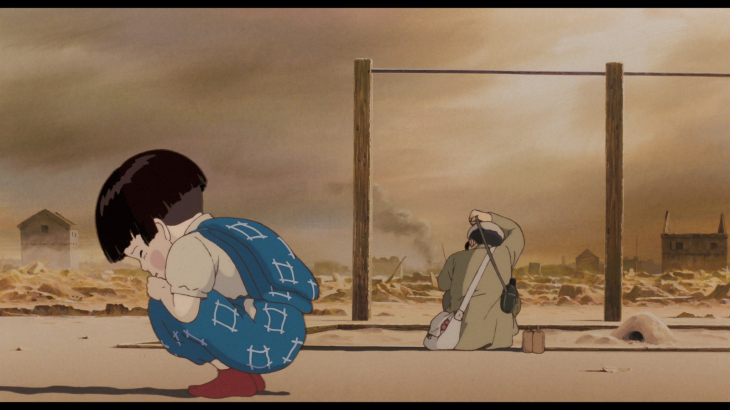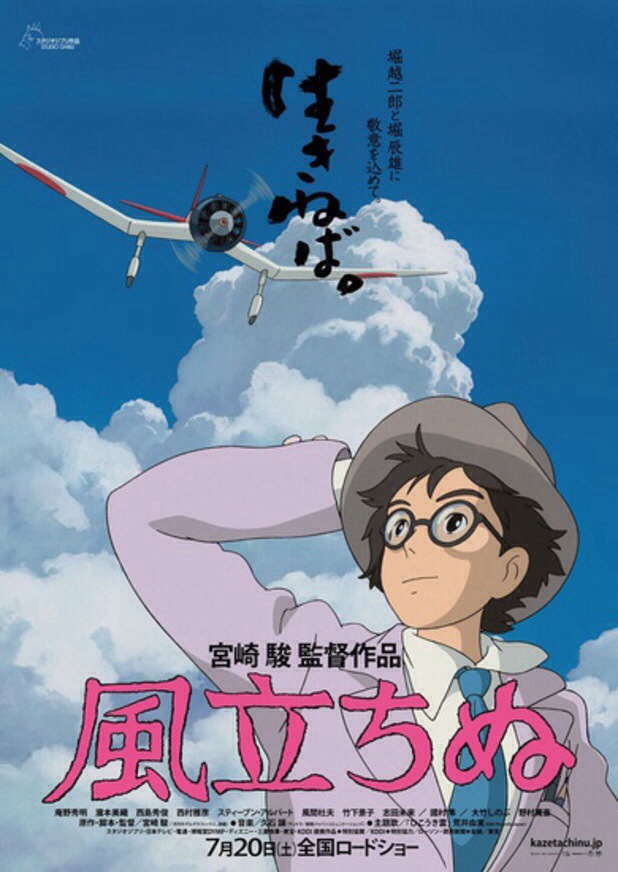The Cat Returns was released in 2002, hot on the heels of the globally-acclaimed Spirited Away. Hiroyuki Morita’s feature debut was destined to be one of Studio Ghibli’s less-acclaimed releases, but still holds a place in the heart of its many fans. So how did it come about and how does it hold up 16 years after its original release?
The journey to ‘The Cat Returns’ began some fourteen years earlier, when Aoi Hiiragi released her manga ‘Mimi o Sumaseba’. Serialised in the magazine Ribon between August and November 1989, this short release was a huge hit and caught the imagination of a young Yoshifumi Kondô, who at the time had just finished as supervising animator on Studio Ghibli’s ‘Kiki’s Delivery Service’.
Soon the studio had acquired the rights to produce a feature film based on the manga, and Kondô was being lined up to make his directorial debut.
In 1995, the film was released. Known in English-speaking countries as ‘Whisper of the Heart’, it hit the big screens in Japan to unanimous acclaim. It was also the highest-grossing film in its native country in 1995. [1]
Equally beautiful and mesmerising, the film focuses on Shizuku, a 14-year-old girl living in Tokyo with a head full of ideas.
Early in the film, Shizuku becomes intrigued by a chance meeting with a stray cat on a train. This cat, Muta, leads her to a mysterious antiques shop. Inside the shop is a curious statue of a cat called The Baron. Inspired, Shizuku spends a significant time in the film attempting to write a novel inspired by these elements.
Four years later, Studio Ghibli received a request from a theme park to create a 20-minute animated short. Hayao Miyazaki and Toshio Suzuki, two of the founders of the company, explored a concept based around these key elements of the girl’s story, enlisting Aoi Hiiragi to write the plot to a spiritual successor to her smash hit.
Her starting point was to assume that her lead character Shizuka was writing the story herself, a period after the end of ‘Whisper of the Heart’. Though the theme park project was cancelled, this story later materialised in the form of a manga. That manga was the basis of a feature length film called ‘The Cat Returns’.
Miyazaki and Suzuki may have been showing faith in other directors, but it was with restrictions. ‘The Cat Returns’ was ostensibly intended as a testing ground for new director Hiroyuki Morita, who had been an animator on several Ghibli features, and was slated for a direct-to-video release. The strength of Morita’s storyboards led to a change of direction and the film was instead destined to be released in cinemas.
Morita was at the top of the team, leading everyone working on the production. In an interview at the time, Miyazaki was excited about the new generation of animators. “If they see Ghibli as a brand, the production team won’t be able to bear the pressure,” he said. “But at the same time, if they don’t try to overcome the pressure they won’t succeed.”
Whilst this film is seen as a success, his position as a successor to the founding members of Ghibli eventually did not come to fruition. He worked as a key animator on later film ‘Tales From Earthsea’, which was directed by Miyazaki’s son Goro, but that is where the buck stops. Indeed, he has not been involved with any animation projects since 2011.
This lack of output is a real shame, because ‘The Cat Returns’ is a real triumph. It never feels like a lacklustre release that you’d typically expect of a direct-to-video film and it’s clear that the choice to take it to theatres was the correct one.
An interview with Morita from the time of release shows what he was trying to achieve with the lead character Haru. His reading of her is that she is natural, spontaneous and uncalculating. He was clearly passionate about the character and the project, and it was an honour for him to be the third director other than Miyazaki and Isao Takahata to direct a feature for Ghibli.
Coming immediately after Spirited Away and therefore garnering much more focus than the studio would have expected when the project started, it does enough to hold its own against what has become regarded as Miyazaki’s magnum opus. The magical elements are muted – a talking cat is a surprise to Haru initially but she comes around to the idea very quickly. It deals with the character’s concerns whimsically rather than with a suggestion of any danger, making it a more child-friendly entry point to the gamut. Perhaps more so than the more recognised Ghibli releases, it feels rooted in the real world – no easy achievement for a film about a girl kidnapped and turned into a cat by The Cat King.

If you’re reading this then chances are you’re from an English-speaking country. If that’s the case then it’s likely you watched the English dub of the film. I usually prefer the original audio, but opted for English on this occasion. I admit I was pleasantly surprised.
Anne Hathaway portrays the lead role of Haru, yelping and screaming her way through the film in the same way original actress Chizuru Ikewaki had. It feels fun and fitting. Cary Elwes provides a traditional aristocratic British voice for The Baron. He has stated it was a combination of David Niven and Alec Guinness, which gives him real dignity and poise. Both are spot on in their leading roles, with both relied heavily on their original Japanese counterparts to give a real sense of energy.
Clearly, as with most animated films translated to a second language, there is an issue with matching the beats to the original acting. It doesn’t always work. It’s similar to ADR (automated dialogue replacement) and replaces emotional delivery with technical accuracy. Peter Boyle’s Mutu is arguably the biggest culprit of this, with a mismatch to the character that feels significantly out of place. Conversely, Andy Richter is wonderful as the king’s assistant Natoru, despite this role originally being portrayed by female voice actor Mari Hamada. Most bizarrely, The Cat King actually looks like Tim Curry, despite his involvement coming long after the animation had finished.
‘The Cat Returns’ will never be considered as one of the greats of the Studio Ghibli features. But it’s in great company and certainly holds its own as a fitting side-story to a better original. It offers more of an appeal to children and could be a good entry point for parents wanting a safe start to their child’s anime interest. To see it restored in wonderful high-definition means there’s never been a better way to enjoy it.
[1] http://www.eiren.org/toukei/1995.html














